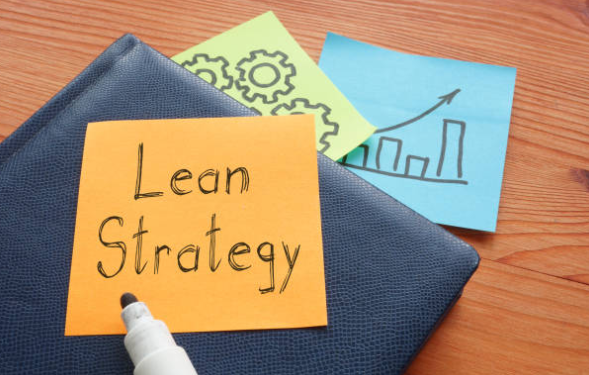Many companies facing performance challenges are questioning their organizational and management approach. For some of them, implementing a lean management approach appears as a solution to rekindle productivity and profitability, particularly by focusing on waste reduction and value-seeking.
What does lean management entail in concrete terms? This blog article reviews the key elements to know about lean management: definition, objectives, and tools.
Lean management : What is it?
Definition and objectives of lean management
To understand the definition of lean management, it’s necessary to start with the English word “lean,” which means “thin” or “without excess.” “Lean management” refers to a method of work organization and management aimed at improving a company’s performance by eliminating unnecessary costs and minimizing resource waste.
Customer satisfaction is at the core of this approach, and all employees in the company are mobilized to achieve these goals.
One of the unique aspects of lean management is that it is a long-term approach that is part of a continuous improvement process. Lean management also places great importance on reorganizing processes to achieve results. Finally, employee development is intended to bring more value to the company.

Lean management at a glance
- Analysis and optimization of flows and processes
- Identify and reduce waste
- Implementation of a “pull flow” system
- Continuous improvement
- Involvement of all employees
Where does lean management come from?
Lean management originated from the production system implemented by the Toyota company in Japan after World War II. At that time, the manufacturer’s goal was to reduce production costs and waste. To achieve this, the company aimed to involve all employees in the organization.
“Lean management” was later theorized by researchers at the Massachusetts Institute of Technology (MIT).
By comparing different production methods in the automotive industry, the researchers concluded that the system developed within Toyota’s factories was the most efficient.
What is known as “lean manufacturing” is, in a way, the Western translation of Toyota’s production system. While lean management was born in the automotive production sector, it has now evolved to the point where it can infiltrate various layers of a company.
Lean management in practice
How to implement a lean management approach in your company?
Here are some fundamental principles to effectively implement a lean management approach:
1. Place the customer at the center of the company and determine what value they are willing to pay for.
2. Identify and reduce waste, from raw materials to the customer. This involves analyzing flows and processes to optimize them.
3. Streamline flows or work with “pull systems.” This reduces the time between a customer’s order and the moment the company is paid for the product, while also reducing storage costs.
4. Involve all employees and tap into collective intelligence. Each employee should contribute to the success of the approach and the achievement of objectives.
5. Embrace a continuous improvement mindset, as new waste can always emerge.
Some companies enlist the help of external consulting firms to implement lean management initiatives and manage the subsequent change process. Others recruit a lean manager or provide training to certain employees.

What are the tools of lean management?
There is a wide range of tools available to implement a lean management methodology. Here are some examples.
Value Stream Mapping, often referred to as “VSM,” is used to map the value chain.
The Japanese 5S method is used for continuous improvement of tasks. It can be translated as “Sort / Set in order / Shine / Standardize / Sustain” in English.
The 3M method (Muda, Mura, Muri in Japanese) focuses on waste, irregularities in production flows, and resource overexploitation.
The 5P method (Why). It simply involves asking the question “Why” five times in response to a given problem to identify its root causes.
There are many other tools available. The key is for each company to use the tools that are most suitable for its context and to establish key performance indicators (KPIs) to measure results. Actions are then adjusted if necessary.
A few tips for implementing lean management
If implemented correctly, lean management can bring significant benefits in terms of overall performance. However, it should not be solely seen as a set of tools to solve an enterprise’s performance issues.
Like any organizational change, it requires specific guidance from managers, who should explain its long-term advantages (continuous performance improvement rather than short-term productivity gains).
Furthermore, companies embarking on the implementation of a lean method must pay particular attention to its impact on employees’ working conditions and occupational health.










